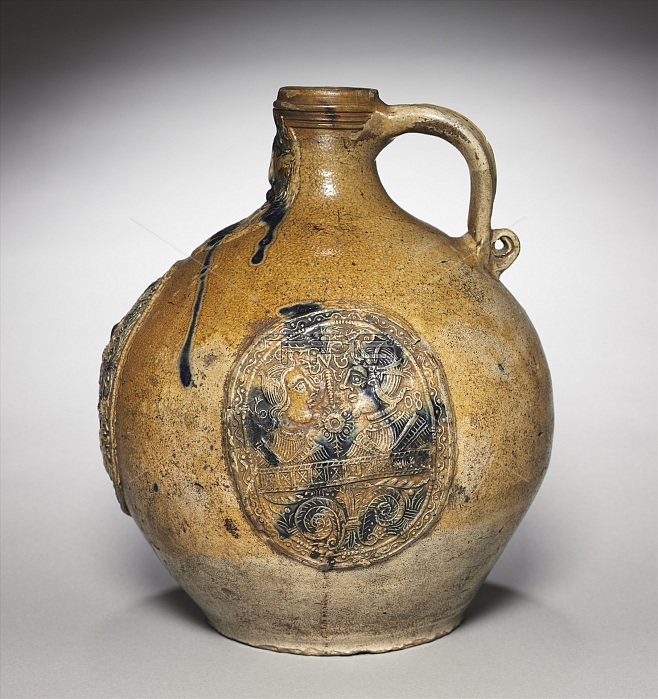
Large Jug, 1608. These globular jugs decorated with bearded masks on their necks represent an important type of Rhenish stoneware made from the fifteenth century onwards. They were named "Bartmann" (Bearded Man) or "Bellarmine" jugs. The latter was a reference to Cardinal Bellarmine (1542-1621) -- hated in Germany for his Counter-Reformational zeal -- because of his supposed resemblance to the bearded images on these vessels. This jug bears the arms of th Pallant van Culemborg family of Gelders. German Stoneware The production and export of German stoneware reached its peak in the late 1500s. Prized for its durability and stone-like appearance, German stoneware became one of the most widely traded forms of pottery, even finding popularity in early America. The distinctive pebbly glass surface, resembling an orange peel, was achieved by introducing salt into the hot kiln during the firing process. This glaze gave clear definition to the coats of arms or other emblems that often formed the surface decoration on large works, usually jugs.
| px | px | dpi | = | cm | x | cm | = | MB |
Details
Creative#:
TOP25291805
Source:
達志影像
Authorization Type:
RM
Release Information:
須由TPG 完整授權
Model Release:
No
Property Release:
No
Right to Privacy:
No
Same folder images:

 Loading
Loading